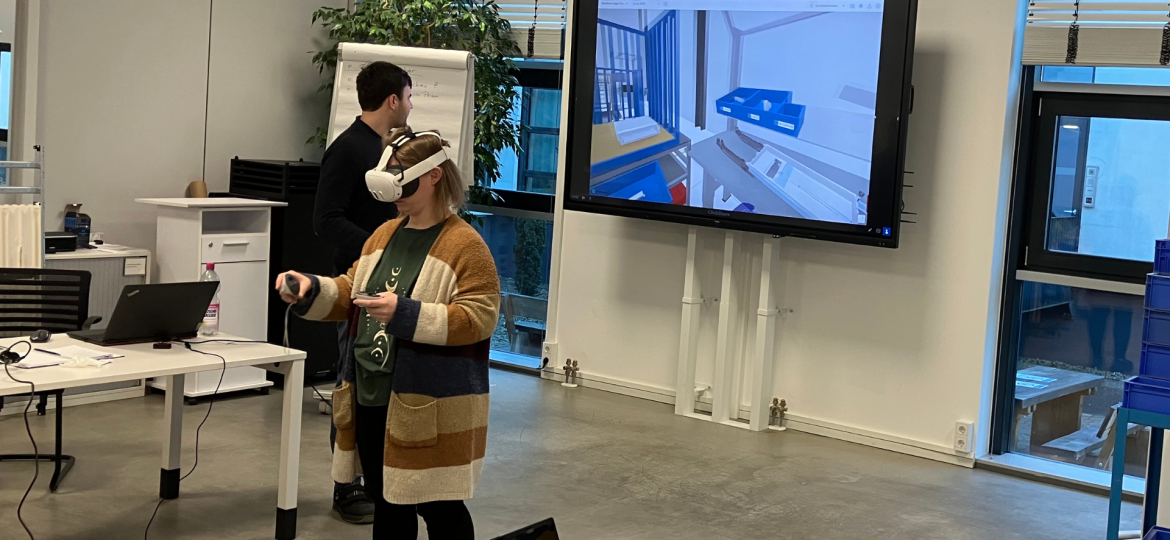
Efficient Workplace Design with Virtual Reality – A Success Story from the Industry
Designing ergonomic and productive workstations is a key challenge for companies. At MTM, we support our customers in optimizing their workstation design. While traditional methods like cardboard engineering provide valuable insights, the use of Virtual Reality (VR) offers a significantly faster and more flexible solution. Our Virtual Reality Workshop helps companies efficiently plan, test, and optimize their workplaces. A recent project demonstrates how businesses can benefit from this innovative approach.
Initial Situation: Optimizing a Workstation in Manual Assembly
A company in the electrical engineering sector was faced with the challenge of making its manual switch cabinet assembly workstations more ergonomic and efficient. The goal was to create a productive and ergonomic environment for employees. To achieve this, the existing workstation needed to be analyzed, evaluated, and optimized through several iterations.
Already during the preparation phase, CAD data of the relevant components was compiled. In addition, we documented the current state of the workstation with photos and measurements. Thanks to this thorough preparation, we were able to accurately recreate the existing workstation in the VR environment Halocline and use it as a starting point for further optimization.
The Workshop: Iterative Improvement in Virtual Reality
The actual workshop took place on-site. In close collaboration with the Industrial Engineering (IE) team and production staff, we developed an evaluation framework to objectively analyze the workstation design.
Using an iterative process, various workstation layouts were tested in the virtual environment. Employees were able to experience and interact with the new concepts in VR and provide immediate feedback. By involving team members of different body sizes, we gained realistic insights into the optimal placement of containers and bulky components.
Results and Optimization Potential
Virtual planning enabled us to identify and implement numerous improvements in a short amount of time. The key optimizations included:
Reduction in the number of containers by introducing a trolley system for improved material supply.
Optimization of space utilization by compacting the arrangement of components.
Shortening of walking distances through a targeted redesign of the workstation.
An additional benefit was the ability to generate PDF and STEP exports of the optimized workstation directly from the VR environment. This made it easy to seamlessly transfer the results into further planning and implementation stages.
Conclusion: Why Companies Should Embrace VR
This project demonstrates how Virtual Reality takes workplace design to the next level, creating real value in the planning process. Instead of building and modifying physical prototypes, VR allows for quick and flexible optimization. Companies benefit from more efficient planning, better employee involvement, and a solid foundation for decision-making during implementation.
Do you also want to design your workplaces in an innovative and efficient way? Contact us and discover how our Virtual Reality Workshop can support your company! Simply send an email to martin.benter@mtm.org to learn more about MTMmotion®.